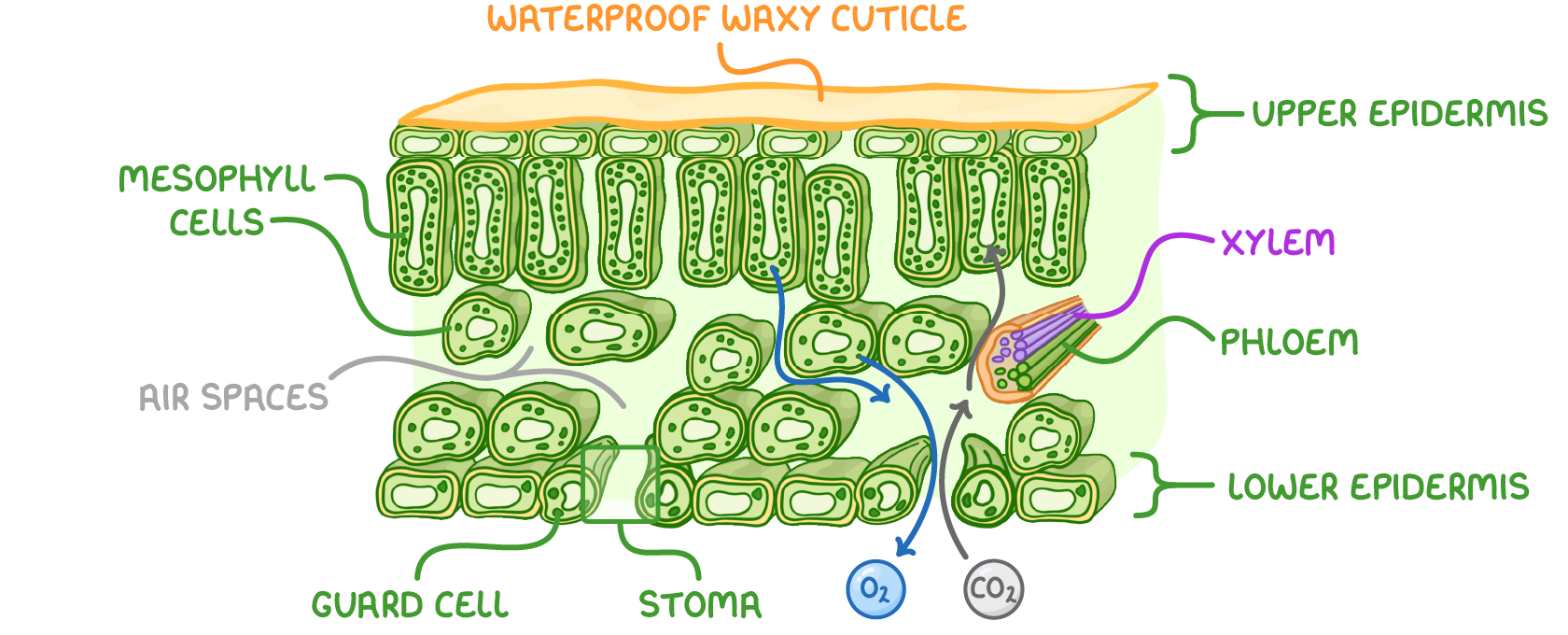Gas Exchange in Plants
This lesson covers:
- Leaf structure and adaptions for gas exchange
- How plants limit water loss
- What xerophytes are and their adaptations to reduce water loss
Limiting water loss Plants require a large leaf surface area for photosynthesis. However, a large surface area also means lots of water loss. How plants can limit water loss:
|
Xerophytes Xerophytes are plants adapted to living in dry environments with limited water availability. Without adaptations they would become desiccated (dry out) and die. |
Key adaptations of xerophytes to reduce water loss:
|
Structure of a typical leaf The structure of a typical leaf allows for efficient gas exchange between the leaf and the surrounding air.  Some important structures include:
|
Adaptations of leaf structures for gas exchange:
|